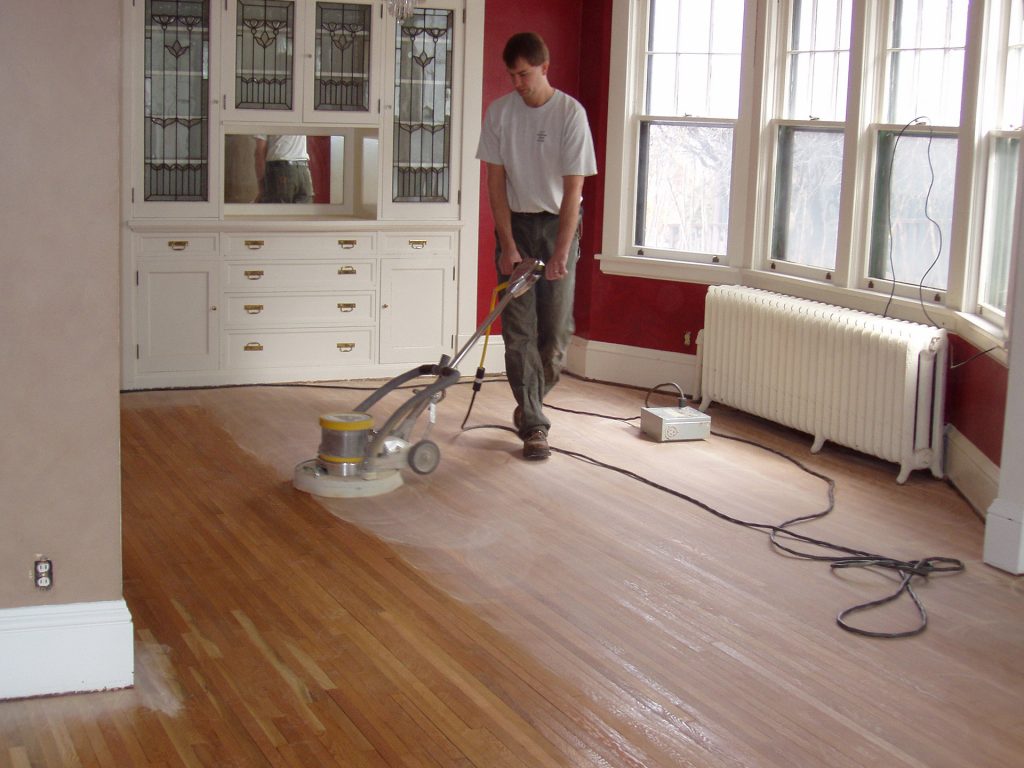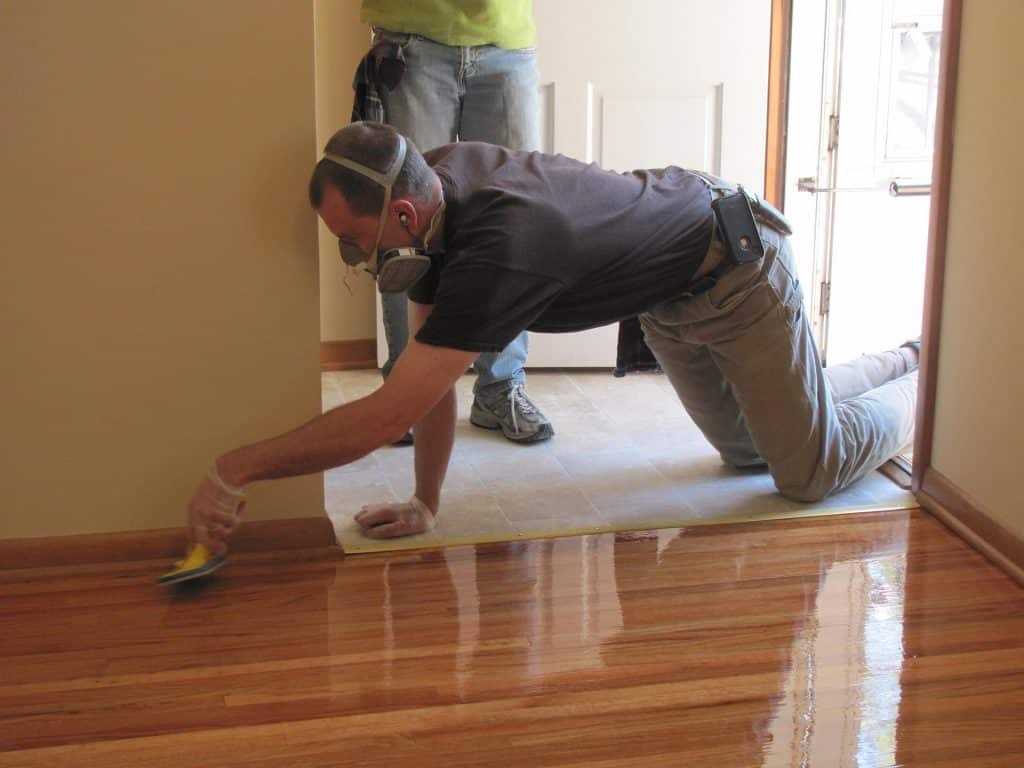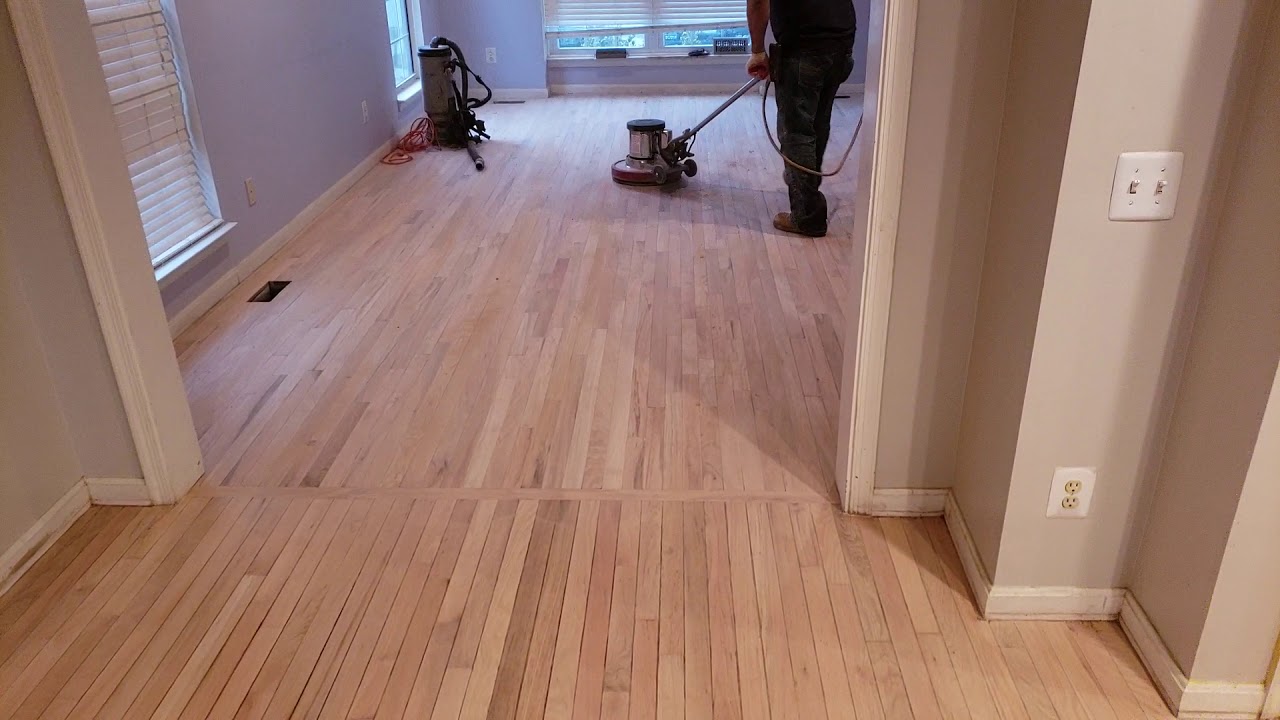What is a Hardwood “Screen & Recoat”?
Screening, also referred to as “buffing,” entails sanding hardwood floors. A thin layer of polyurethane that shields the hardwood from stains and scratches is removed throughout the procedure. After screening, floor restoration experts undertake a recoating, which simply involves applying a fresh coat of polyurethane over the sanded coating.
Screening will not address deep scratches or changes in color. If you have a stain on the hardwood floor or Pet Urine or a scratch that has penetrated down to the raw wood, the screening process will not fix or help this. It is simply adding on a coat of clear protection on the hardwood floor. Example, similar to nail polish, if your color has chipped and you add an extra coat of gloss, it will help preserve the existing polish, but will not change the color underneath. This is identical to hardwood screening. Screening will revive or refresh your floors, postponing the need for a complete sanding and refinishing later.
- When will hardwood Screening NOT work?
Screening will not work on waxed floors as it can not adhere properly to the surface. Also, it will not work well if you have used products that have wax in them (e.g. mop and glo or orange glo). - If the floors have worn down past the color (and/or you have portions of the floors that are gray from oxidation), screening is not the right process. Instead, it’s time for a full sand and refinish.
- If you want to change the color of your floors. In order to change the color of your floors, you need to sand the floors completely down to the raw hardwood and then apply the stain.
- If you have gray patches on the floor, it’s too late for a screening
- A screening will not address UV discoloration under area rugs
How does the process of hardwood screening work?
Unlike sanding and refinishing, screening just scuffs up the floor and is relatively clean. It is a faster, and hence less expensive process as well. After the floors are screened (which could take an hour or two…or sometimes 1/2 day to a full day, pending on the areas), we then apply 1 coat of polyurethane. The buffer has a mesh that is embedded with abrasive particles – just enough to allow proper bonding for the new coat of poly. It is basically the last step of the sanding process.
Typically, for a screen and recoat, you add one coat of poly, but if you’d like even extra protection, you can add on 2 coats. You would screen before each coat.
Screening is generally a 1 day process with an hour between each coat. Just like sanding and refinishing, all the furniture needs to be moved. There is some drying time involved as well – usually 24 hrs before you can walk on it and a few more days before you can move furniture back.



